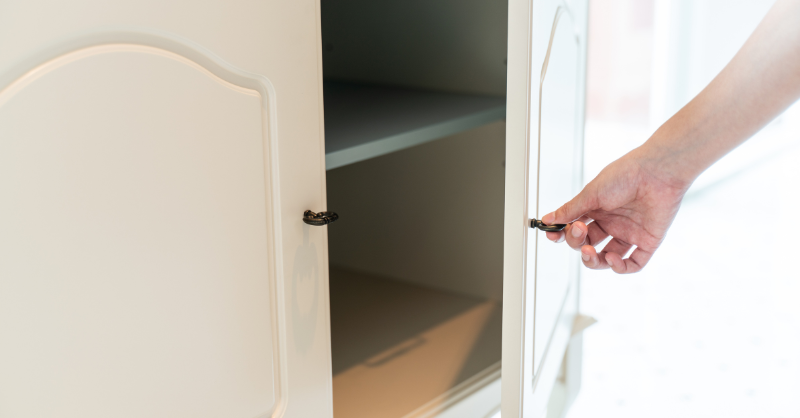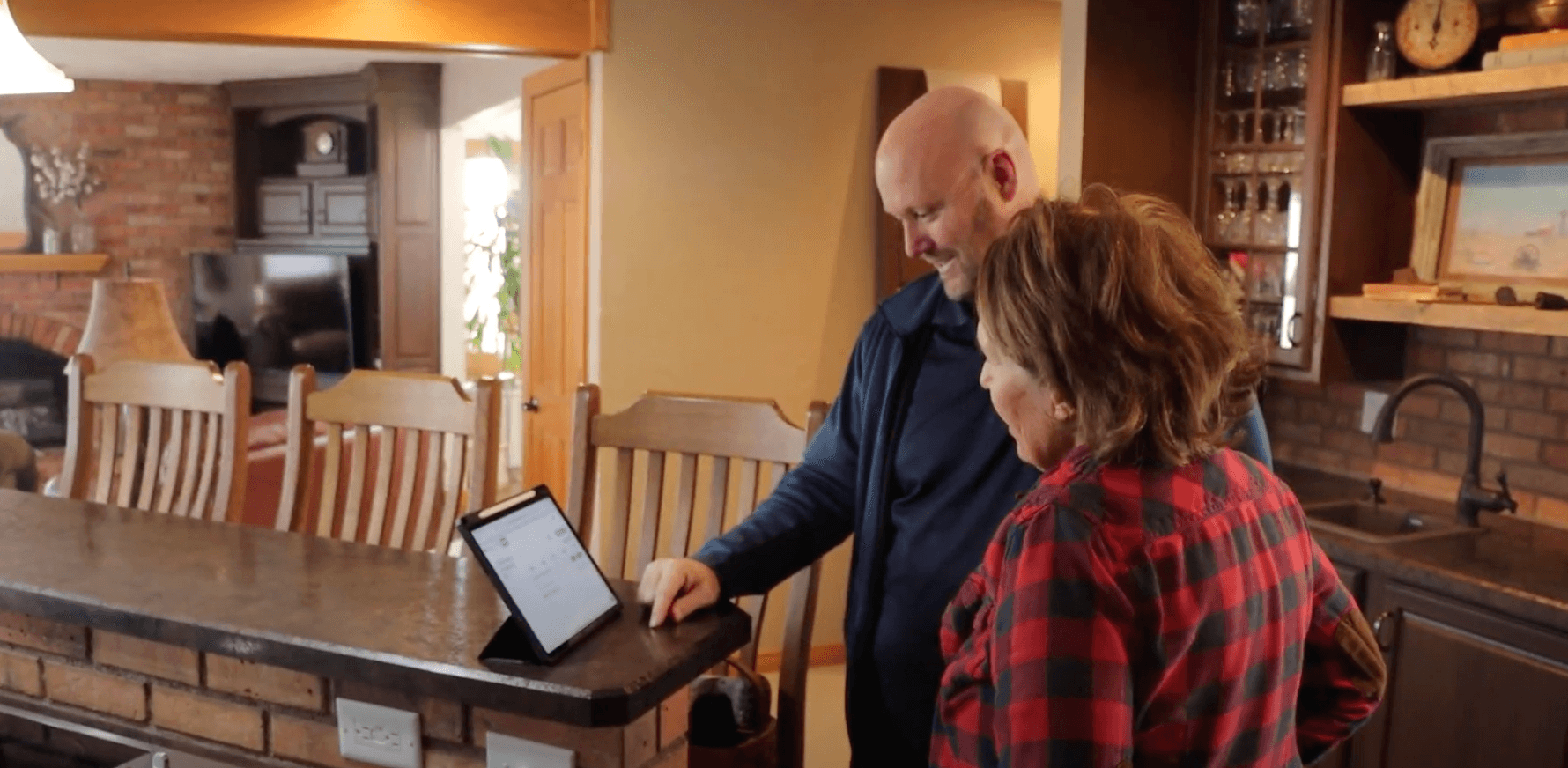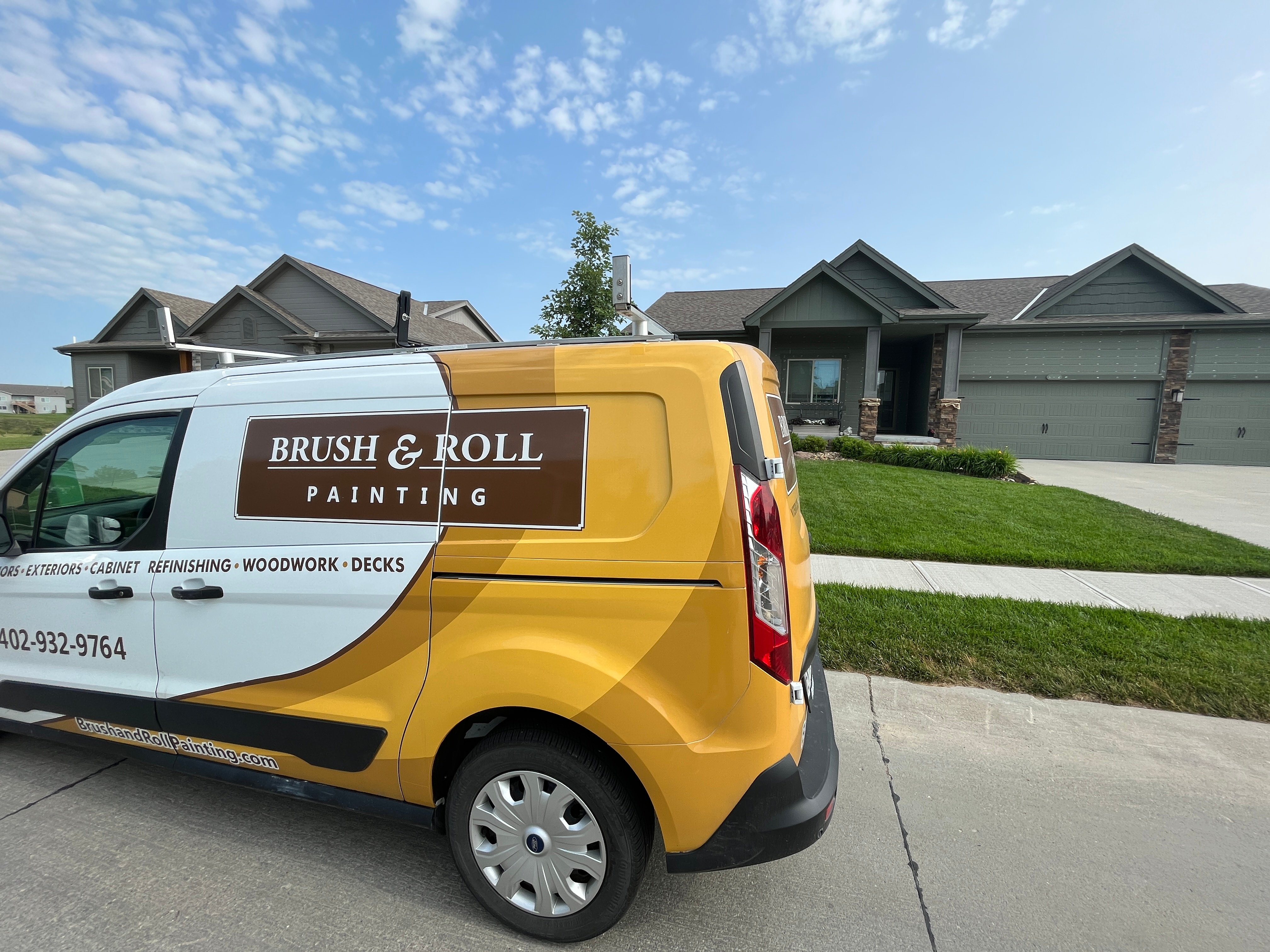Do Painted Cabinets Show Dirt & Fingerprints Easier?
July 2nd, 2025
4 min read

You finally decided to update your kitchen. Maybe the old oak cabinets were making the space feel a little dated. Maybe the finish was scratched up, and no amount of scrubbing ever made it feel truly clean. Painted cabinets seem like the perfect upgrade: modern, smooth, fresh. But then, you hear someone say they’re “a pain to keep clean” or that they show “every little fingerprint.” Suddenly, you’re second-guessing everything. Will this new investment just turn into another maintenance hassle?
At Brush & Roll Painting, we’ve been painting cabinets for homeowners across Omaha since 1996. We’ve worked in homes of all ages and layouts, and we’ve seen firsthand how the finish, color, and paint quality can all impact how cabinets look over time. We don’t just paint, we educate our customers so they can feel confident about what they’re getting and what they’ll need to maintain it.
In this guide, we’ll explain what actually causes fingerprints and smudges to show up more visibly on some painted cabinets than others. You’ll learn how factors like paint quality, finish sheen, color, and cleaning habits all play a role. By the end, you’ll have a clear idea of what to expect and what questions to ask when you’re getting a quote for cabinet painting.
Why Do Some Painted Cabinets Show More Dirt and Fingerprints?
There’s no single reason. It’s a combination of several things, some you can control and some you can’t. Here’s what matters most:
1. The Type of Paint or Coating Used
Not all paints are created equal. Lower-quality paint products, especially ones not designed for cabinets, can feel sticky or soft even after they’ve dried. This type of finish attracts fingerprints, smudges, and grease much more easily. It also tends to trap dirt in tiny surface textures or bubbles.
At Brush & Roll Painting, we use a product called Milesi, which is 2K polyurethane. It’s a high-performance coating designed for cabinets and furniture. Once cured, it creates a hard, smooth surface that resists oils and smudges better than standard latex paints. Because it’s more durable, it also stands up to regular cleaning without wearing down.
If a painter is just brushing on regular wall paint or a trim enamel, you’re much more likely to deal with noticeable marks down the road.

2. The Color You Choose
Here’s the truth: color makes a big difference. Just like you’ll notice dust more on a black car than a silver one, the same applies to cabinets.
- Dark colors like navy, black, espresso, or deep charcoal tend to show fingerprints, especially in natural light.
- Light colors like white, cream, or soft gray can show dirt, but not necessarily fingerprints. They’re often easier to wipe clean and feel “brighter” even when they’re slightly smudged.
- Medium tones—like taupe, sage, or greige, can be a happy middle ground for homeowners who want less maintenance.
Keep in mind that sheen also plays into how the color looks. A glossy black cabinet will show more marks than a matte one.
3. The Sheen Level or Finish
Glossy surfaces reflect more light. That means they also highlight smudges more. While gloss is easy to wipe clean, it will draw attention to fingerprints if they’re there.
On the other hand, flat or matte finishes absorb light and can hide marks better, but they’re not always the easiest to clean. A happy medium is a satin or soft sheen, which balances cleanability with less glare.
With the Milesi 2K polyurethane system, we can control the sheen so you get something durable but not overly shiny. It gives cabinets a smooth feel while making cleaning easier.
4. Your Cleaning Habits
Even with the best paint and color, kitchens get messy, it’s just part of daily life. Greasy hands after cooking, kids grabbing snacks, and even moisture from steam can all affect your cabinets over time.
The good news? If your cabinets are properly coated with a high-quality product like Milesi, you can clean them without worrying about wearing away the finish. A simple wipe with a microfiber cloth or a damp rag usually does the trick.
Avoid harsh scrubbing pads, abrasive cleaners, or anything bleach-based. These can break down cheaper coatings and cause the surface to dull or discolor, which then makes dirt and marks show more easily.
5. The Environment (Kitchen Layout and Lighting)
Where your cabinets are located matters; cabinets near the stove or trash area tend to collect more grime. Ones near windows or under pendant lights may show fingerprints more because of how the light hits the surface.
Open-concept kitchens with lots of natural light tend to “expose” any imperfections, so the choice of color and finish becomes even more important in those layouts.

Do All Painted Cabinets Show Fingerprints Eventually?
They can, but how much and how often depends on how they were painted, what color and finish you chose, and how you care for them.
If your cabinets were finished by a professional using a high-end product like a 2K polyurethane, they’ll hold up much better than a basic latex paint job and they likely won't ever show fingerprints. In fact, we’ve had customers in Omaha come back years later saying their cabinets still clean up like new.
On the other hand, if the wrong product was used or the surface wasn’t prepped correctly, fingerprints, dirt, and even paint peeling can become a problem much sooner than expected.
How to Reduce Fingerprints and Dirt on Painted Cabinets
If you’re planning a cabinet painting project and want your finish to stay looking great, here are some steps you can take:
- Ask your painter what product they’re using. If it’s not a professional-grade cabinet finish like Milesi or a 2K polyurethane, it may not resist fingerprints well.
- Choose a lighter or medium-tone color. These tend to show less grime and are easier to keep looking clean.
- Pick a satin or low-sheen finish. Gloss can highlight smudges, while flat finishes may stain more easily.
- Clean with the right tools. Microfiber cloths and mild soap are usually all you need.
- Wipe regularly. A quick wipe every few days prevents buildup and keeps the surface feeling fresh.
- Install hardware. Handles and knobs help reduce handprints on the cabinet surface. If you’re going from knobless to painted, adding hardware can also complete the new look.

Will Painted Cabinets Show More Dirt or Fingerprints?
If you’ve been worrying about whether your painted cabinets will be a magnet for mess, you’re not alone. Many Omaha homeowners ask this exact question. And the answer? It depends. But now, you know what it depends on.
Hopefully, this article helped you understand how different factors, like the quality of the paint, the color, the sheen, and even how you clean, can all impact how your cabinets will look over time. You also learned that not all painted finishes are equal, and the right product can go a long way in keeping cabinets clean and easy to maintain.
At Brush & Roll Painting, we have served Omaha homeowners since 1996. We have worked on thousands of cabinets and found the right process and products to create lasting results.
Click the button below to get a quote if you’re ready to start your cabinet transformation.
If you’re not ready to get a quote, but you want to plan your budget, use our cabinet painting pricing calculator to get an estimate based on your kitchen size and cabinet layout.
Kaylea is the Brush & Roll Painting Content Manager. Kaylea is a Journalism and Media Communications summa cum laude graduate with a minor in Marketing from the University of Nebraska at Omaha. Kaylea manages the marketing for Brush & Roll Painting.
Topics:



















-Jul-23-2025-02-21-33-5468-PM.png?width=800&height=418&name=Blog%20Post%20Image%20Size%20(2)-Jul-23-2025-02-21-33-5468-PM.png)




-Oct-22-2025-01-39-19-5208-PM.png?width=800&height=418&name=Blog%20Post%20Image%20Size%20(1)-Oct-22-2025-01-39-19-5208-PM.png)


